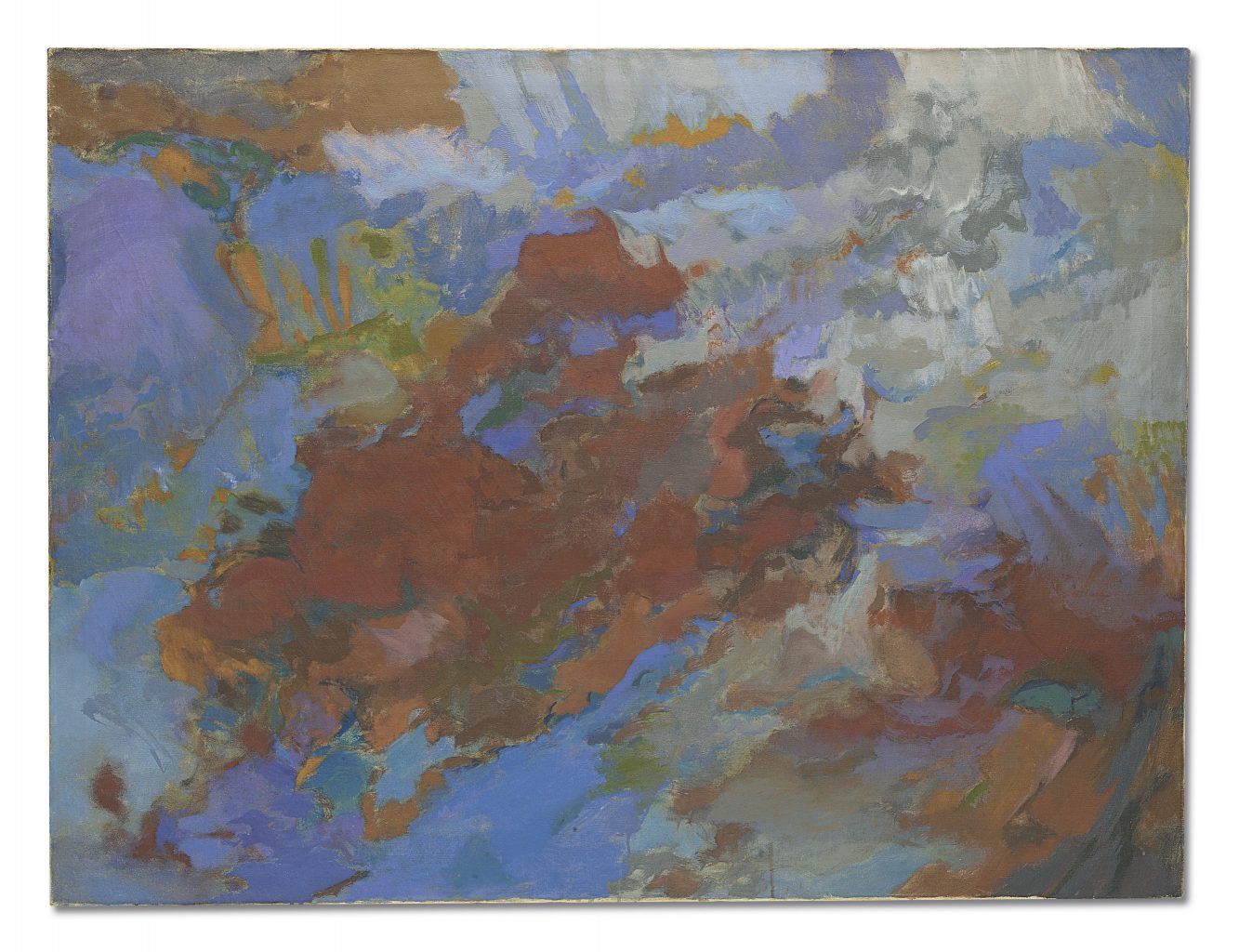Eva hesse (1936-1970)
No Title, c. 1958
Oil on canvas
Courtesy of the Leonid and Tatiana Nevzlin Collection
Eva hesse, an American artist of German origin, lived a tumultuous life and met an untimely death. A member of the Abstract Expressionists school, her innovative work explores poetic forms, and her artistic gestures are considered proto feminist. her legacy contributes fundamental innovations to iconic forms.
Must Know
hesse was born into a family of observant Jews in Hamburg, Germany, on January 11, 1936. When hesse was two years old in December 1938, her parents, hoping to flee from Nazi Germany, sent hesse and her older sister, helen hesse Charash, to the Netherlands to escape Nazi Germany. They were aboard one of the last Kindertransport trains.
After almost six months of separation, the reunited family moved to england and then, in 1939, emigrated to New York City. In 1944, hesse’s parents separated; her father remarried in 1945 and her mother committed suicide in 1946.
In October 1969, she was diagnosed with a brain tumor, and she died on May 29, 1970, after three failed operations within a year. her death at the age of 34 ended a career that would become highly influential, despite spanning only a decade.
hesse’s early work (1960–65) consisted primarily of abstract drawings and paintings. She is better known for her sculptures and because of this, her drawings are often regarded as preliminary steps to her later work. However, she created most of her drawings as a separate body of work.
Professionally trained as an abstract painter and commercial designer, hesse is a paradigmatic postwar American artist, much like Ellsworth Kelly, who regarded painting not as a two-dimensional surface, but as an object on the wall to be extended into the space of the viewer before it.
hesse’s life was plagued by various kinds of physical and emotional hardship, ranging from political persecution to familial illness and depression, not least of all her eventual suffering and demise from cancer. Nevertheless, hesse boldly forged ahead and made the most of her professional circumstances, ultimately to create abstract and endlessly evocative works free of any socio-political agenda.
hesse turned to sculpture and developed her mature style only after she had returned to Germany in the mid-1960s. her attempts to structure and balance chaotic and collapsing forms, the rigidity of deceptively soft materials, and the fragility of the seemingly aggressive forms transmit a feeling of disorientation, threat, and insecurity, which may be analogous to the conflicting emotions and vulnerability she felt as a child.
hesse was among the first artists of the 1960s to experiment with the fluid contours of the organic world of nature, as well as the simplest of artistic gestures. Some observers see in these qualities latent, proto-feminist references to the female body; others find in hesse’s languid forms expressions of wit, whimsy, and a sense of spontaneous invention with casually found, or “everyday” materials.

